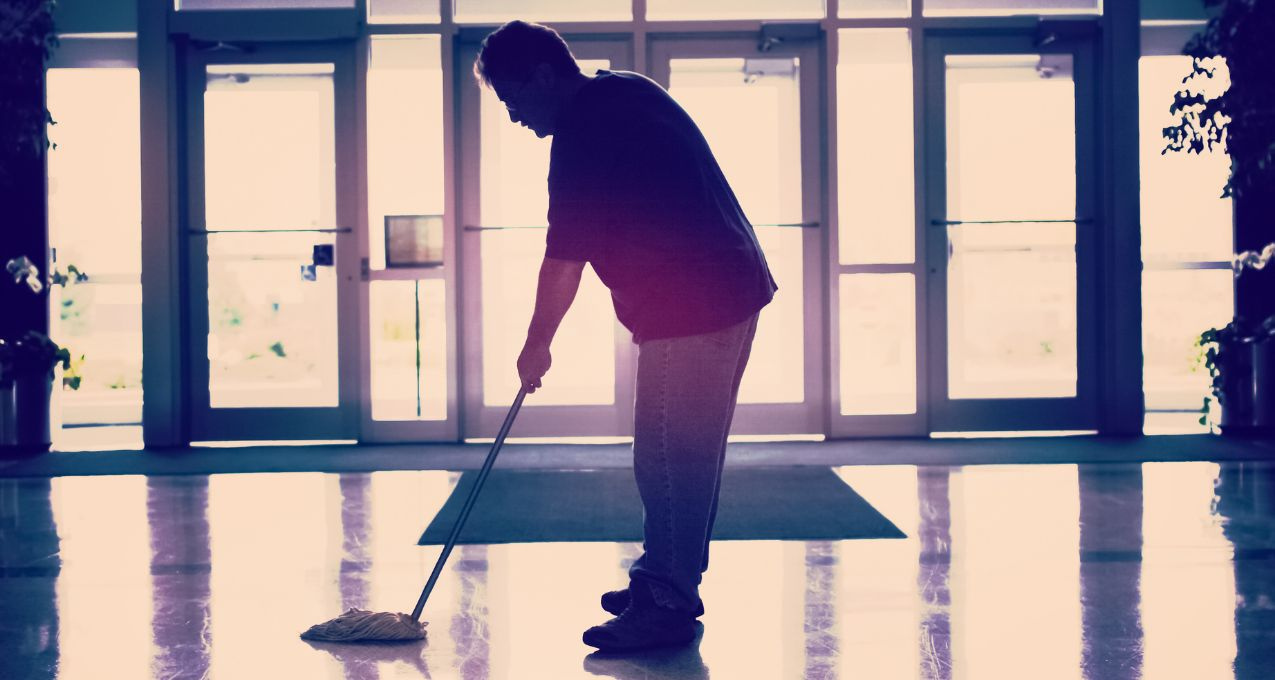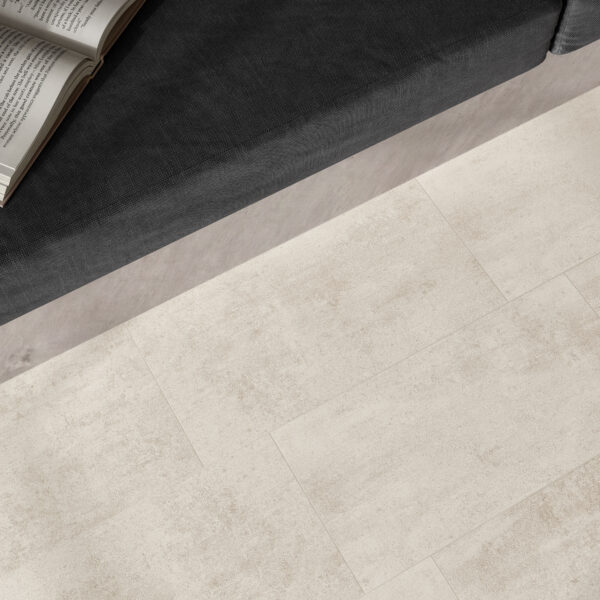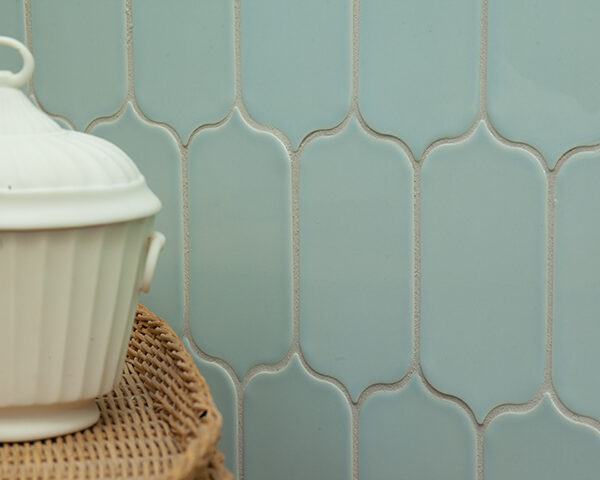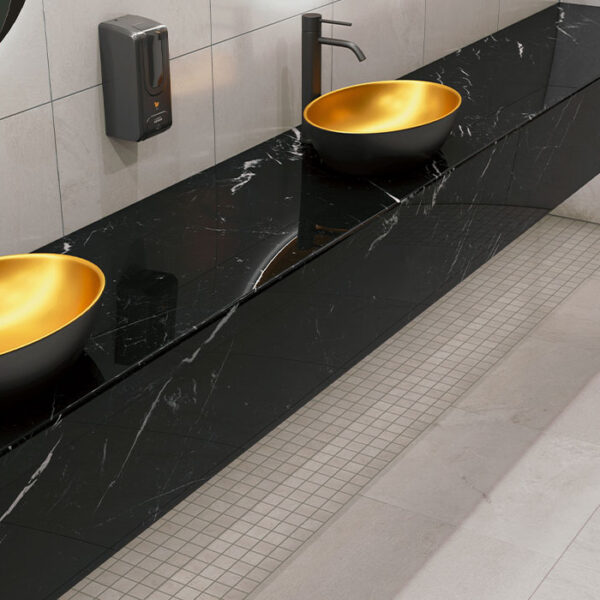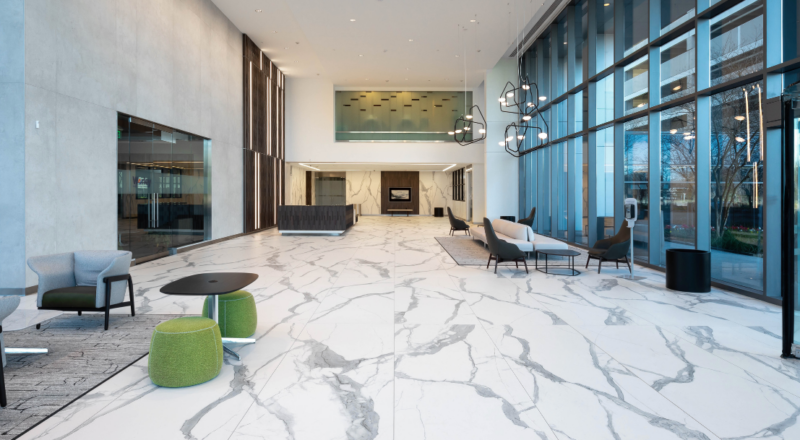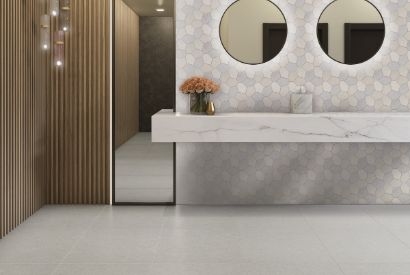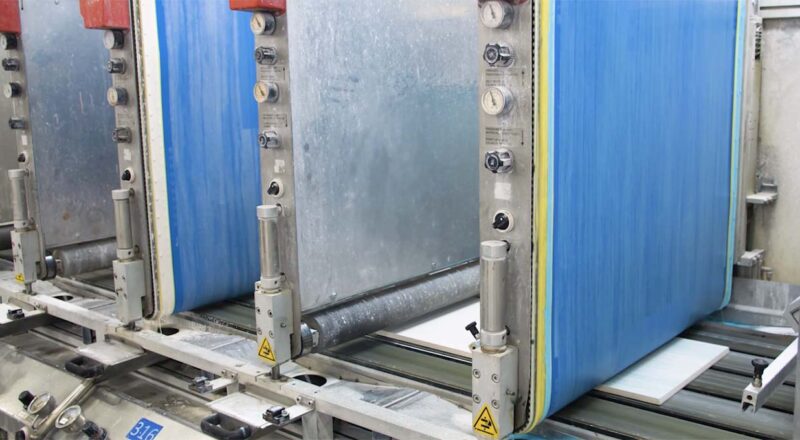In multifamily communities, flooring plays a key role in creating an aesthetically pleasing, welcoming environment. But in all senior living environments (retirement and independent living, assisted living, skilled nursing facilities, and continuing care/ long-term care facilities), the flooring must provide a safe, stable, and durable foundation that can meet the ambulatory needs of aging residents. Ideally, flooring (as well as walls and countertops) should require minimal maintenance and be easy to clean and sanitize.
Keeping things clean and sanitized in an assisted living community or skilled nursing facility is paramount. Regularly mopping and disinfecting floor, wall, and countertop surfaces helps reduce the spread of germs to promote a healthier environment. Porcelain and ceramic tile surfaces are the most hygienic and hands-down the easiest surfaces to clean and maintain. Still, there are many more reasons cleanliness is so important in senior housing.
Clean Surfaces Reduce the Risk of Allergies

Frequent cleaning helps to prevent the spread of harmful microbes and pathogens, but it also helps to reduce rates of allergies and other respiratory issues. May allergens are found in the dust and other particles that infiltrate the air. The particles come from both indoors and outdoors, but about two-thirds of dust comes from outdoors. Dust is a potpourri that includes dead skin shed by people, fibers from carpets and upholstered furniture, in addition to dirt, pollen, and other outdoor contaminants that are tracked in and distributed onto the floor. Dust gets swept up into the air from daily activities. This floating dust can be harmful, particularly for individuals with allergies, asthma, or other respiratory issues. The best defense is vacuuming (or using an electrostatic cleaner) and mopping frequently. With porcelain tile flooring, even a quick damp mopping with just warm water (or water mixed with a mild alkaline detergent) will remove the particles from the floor before they can get into the air and potentially exacerbate respiratory issues.
Additionally, porcelain tile is inherently hypoallergenic and is one of the best hypoallergenic flooring surfacing choices on the market. The hard, nonporous surfaces do not trap allergies, so damp mopping quickly removes dust particles that have landed there
Clean Surfaces Promote Good Indoor Air Quality

Porcelain tile flooring support good indoor air quality. Shown: Crossville’s new Access Point porcelain tile is readily available, budget-priced flooring solution that’s part of our new CrossValue program. To see all the collections n the program, download the CrossValue brochure.
A build-up of bacteria, mold, and fungi on floors can lead to poor indoor air quality and many building-related illnesses, including asthma, hypersensitivity pneumonitis, inhalation fever, rhino-sinusitis, and infection. Porcelain tile floors are impervious (impervious surfaces prevent water penetration), making them highly resistant to bacteria, mold, mildew, and fungi. Porcelain and ceramic tile also emit zero VOCs (volatile organic compounds), further contributing to good indoor air quality.
Clean Surfaces Enhance Infection Control
 Crossville’s Civilization porcelain tile not only enhances infection control, it’s carbon neutral as well. learn about our carbon reduction plan here.
Crossville’s Civilization porcelain tile not only enhances infection control, it’s carbon neutral as well. learn about our carbon reduction plan here.
Regularly disinfecting surfaces is as important as regular cleaning to control the spread of infection. Cleaning with friction removes surface soil and bioburden (types of native bacterial and fungal flora present on a surface). Following up the friction cleaning with a disinfectant kills microorganisms, mitigating the spread of contagious diseases.
Crossville porcelain tiles will not harbor bacteria and viruses, and they are easy to disinfect because they are chemical-resistant to strongly acidic and alkaline chemical products. The exception is hydrofluoric acid, the only acid that will attack our tiles due to its molecular structure. For sanitizing porcelain floors, walls and countertops, the CDC recommends diluting one cup of bleach with five gallons of water. Diluting the bleach with water decreases the alkalinity and is safe for regular use on porcelain and ceramic tile surfaces. Thoroughly rinse any cleaner from the surface, and do not allow residue to dry on the tile and grout.
Clean Floors Reduce the Risk of Fall-Related Accidents
When dirt and other contaminants build up on floors, they become a health and safety hazard as people are more likely to slip, trip, or fall. Slip and fall accidents are among the most significant risks for senior living residents and are the leading cause of fatal and nonfatal injuries for older Americans.
 Crossville’s exterior finish Owen Stone porcelain tile can be used indoors for even more slip resistance.
Crossville’s exterior finish Owen Stone porcelain tile can be used indoors for even more slip resistance.
Contrary to what you may read online, porcelain floors are not a poor flooring choice for senior housing. While you would not want to install a polished tile floor or one with inferior slip resistance (low DCOF), you can be assured that Crossville unpolished porcelain floor tiles are up to the task. Our manufactured porcelain tiles have a wet DCOF of 0.42 or greater*, which means if a level interior floor receives a wet spill, a person walking on the wet floor is not likely to slip. Crossville has an in-house lab that regularly tests for DCOF throughout manufacturing runs. This regular testing provides higher confidence that Crossville tile consistently meets DCOF standards regardless of production run. Crossville also offers special exterior finish tiles that are good indoor flooring alternatives in some senior living areas because they supply even greater slip resistance. Click here to learn more about our outdoor tiles.
Learn More About DCOF
Click here to learn more about DCOF and the slip resistance of porcelain tile floors.
* A wet DCOF of 0.42 or greater is not necessarily suitable for all projects. For example, a ceramic or porcelain floor with standing water, oil, or grease might require a higher DCOF. Specifiers must also consider the type of use, traffic, expected contaminants, expected maintenance, expected wear, and manufacturer’s guidelines.
Care & Maintenance of Crossville Tile
.jpeg)
Like all Crossville porcelain tile collections, Shades 2.0 is easy to clean and maintain.
Crossville’s dense, low-absorptive, porcelain body inhibits the penetration of contaminants and, therefore, is a tile that is easy to maintain. The low absorptive nature of our porcelain tile not only inhibits dirt and stains but also prevents top finishes and most chemicals from penetrating the surface.
How to Clean Crossville Tile
1. Use damp mopping to clean up spills immediately. Damp mopping uses approximately 1 gallon of cleaning solution (mixture of water and detergent) per 600 square feet. An easy way to prepare for damp mopping is to wring out the mop before use.
2. Use wet mopping daily to clean the floors. Wet mopping uses approximately 1 gallon of cleaning solution (mixture of water and detergent) per 300 square feet. To prepare for wet mopping, do not wring out the mop before use.
3. Use only the recommended dilution of detergent. More is not always better; higher concentrations of detergent in the cleaning solution will only make it more difficult to rinse. Avoid cleaning products that contain lemon, vinegar, or other acidic substances.
4. Allow the detergent solution to remain on the floor as advised. Give the detergent solution time to act on the soil load. Generally, 5-10 minutes is sufficient.
5. Always agitate the floor when wet mopping to ensure soil removal. After putting the solution on the floor, use a nylon pad, bristle brush, or deck brush to friction clean.
6. Rinse thoroughly with clean, clear water to remove the dirty detergent solution and emulsified soil. Rinsing is a critical step in the maintenance procedure. Remove the rinse water with a wet vacuum, dry mop, or toweling. If the dirty detergent solution is not removed and is allowed to dry on the surface, a coating will form, which is very difficult to remove.
Why Are Tile Floor Sometimes Sticky After Cleaning?

Classic Grooves porcelain tile is an excellent surfacing choice for resident kitchen floors and walls.
Sticky floors happen when too much cleaning solution is used or the wrong cleaning solution is used. Residue can also be due to dirty water used in rinsing the mop. It is a myth that the more cleaning chemical used, the cleaner your tile floors will become.
Too Much Cleaning Solution
Too much cleaning solution will give you the opposite result. When using a cleaning solution to mop tile floors, it’s important to always be exact in following what is written on the label.
Using Dirty Water
Using dirty water in the same bucket of water can also cause a residue build-up. To avoid this problem, replace the dirty water with clean water every time you see it get darker and debris floating. Then, Use clean water to flush everything when you are done cleaning the floor.
Steam mops or microfiber mops are known to absorb dirt better, and they can hold the dirt longer before it dumps into the water. There are also mop and bucket sets available that automatically separate clean and dirty water.
Using the Wrong Cleaning Solution
Using low-quality cleaning products or the wrong cleaning solution can also make floors sticky floors after mopping. Some products can leave behind a residue on the floor that makes it sticky. That sticky residue will actually attract more dirt like a magnet, causing the tile flooring to quickly become dirty. Use high-quality, neutral Ph cleaning products that are designed specifically for tile to avoid sticky residue.

Crossville’s Handwritten ceramic wall tile is any easy-to-clean wall covering for commercial multifamily environments.
Senior multifamily communities should be safe, hygienic, comfortable environments that remind residents of home. Senior living facilities ‘ specialized requirements and safety codes don’t have to limit your flooring and surfacing options. Crossville offers a diverse and beautiful selection of porcelain, ceramic, and glass tile products that can safely meet senior housing needs. Our tile collections are suitable for common areas (indoor and outdoor) and personal living quarters and will perform beautifully throughout each facility’s life cycle.

